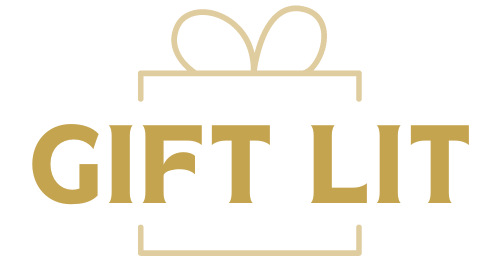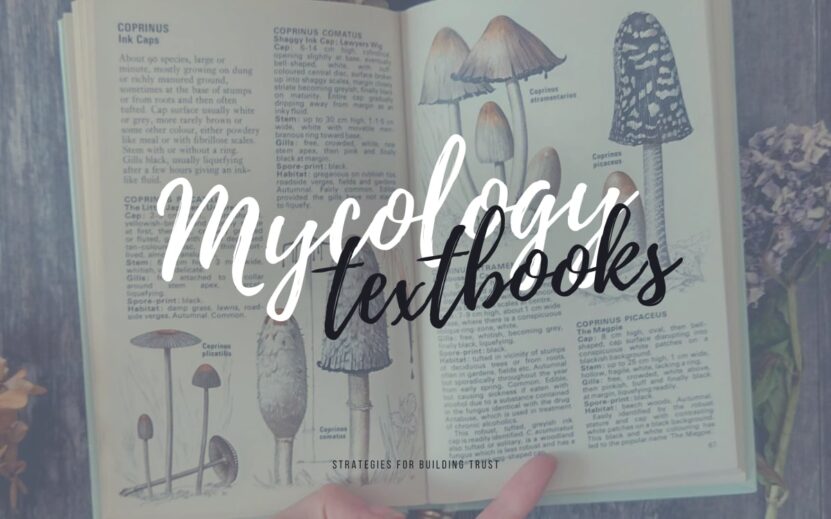Mycology is the study of fungi, which are ubiquitous in nature and play a vital role in several ecological processes. There are textbooks that are essential for students and researchers interested in understanding the morphology, ecology, and systematics of fungi. In this blog post, we will explore some of the best mycology textbooks that cover various aspects of fungal biology in great detail.
List of Best Mycology Textbooks
1. The Fifth Kingdom
Author: Bryce Kendrick
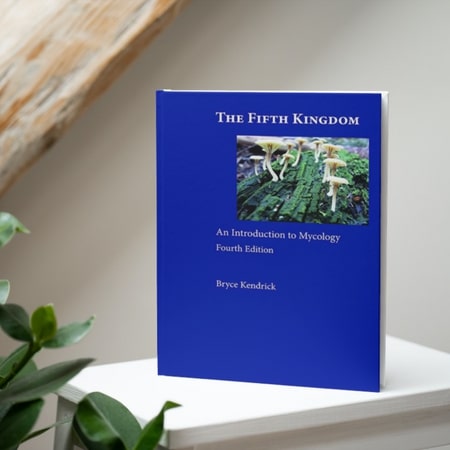
The updated edition of “The Fifth Kingdom” is a must-have for students and researchers interested in the latest developments in mycology. The book reflects the field’s adoption of a new taxonomical framework for fungi as a whole, as well as the latest advances in molecular genetics.
The updated chapter on fungicides provides a comprehensive overview of recent discoveries, while the discussion of poisonous mushrooms has been revised to include newly recognized types of mushroom poisoning and their corresponding treatments.
In addition, the expanded chapters on medical aspects of mycology and practical uses for fungi provide valuable insights into these important areas of study.
This new edition of “The Fifth Kingdom” is not only informative but also visually stunning, with full-color illustrations and access to Bryce Kendrick’s extensive online collection of photographs, charts, and other visual resources. Kendrick’s characteristic clarity, warmth, and humor make this book one of the best and most engaging introductions to mycology.
Furthermore, the entirely new chapters on applications of mycological training and other related topics offer a fresh perspective on the field, making it an essential reference for anyone interested in the fascinating world of fungi.
2. Introduction To Mycology
Author: Chelin Rani Gnanam
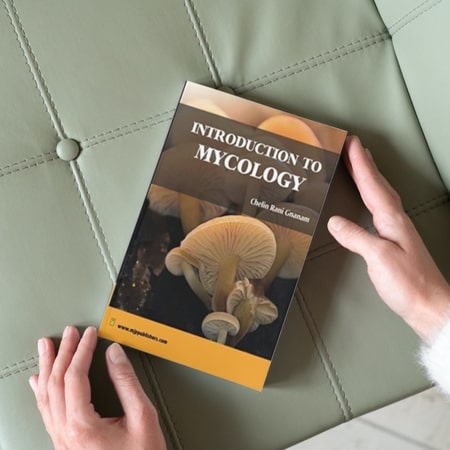
For those seeking an introduction to the fascinating world of fungi, “Introduction to Mycology” is an excellent starting point. This comprehensive textbook aims to provide basic, concise, and in-depth information about the various aspects of Fungi, taking into account the significant increase in our knowledge of these organisms.
The book covers all major divisions of fungi, as proposed by Ainsworth in 1973, and provides a detailed account of the life history of many genera that is suitable for the needs and syllabi of Indian universities.
The author’s long teaching experience is evident in the book’s clear and straightforward language, making it accessible to students of all levels. The text is complemented by labeled illustrations that aid in the understanding of the subject matter.
The book also discusses the classification of fungi and their economic importance in detail, making it an ideal resource for those interested in the applied aspects of mycology. Overall, “Introduction to Mycology” is a valuable resource for anyone interested in the diversity and importance of fungi.
3. Illustrated Dictionary of Mycology, Second Edition
Authors: Miguel Ulloa and Richard T. Hanlin
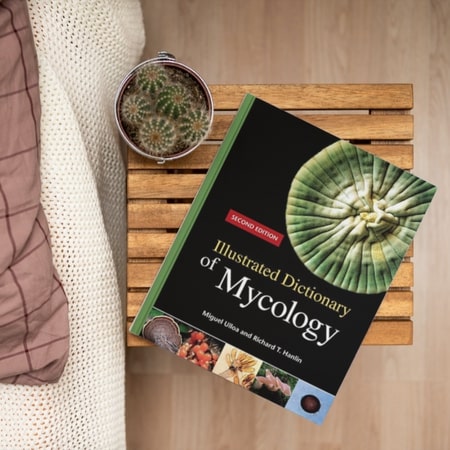
For anyone looking for a comprehensive and visually stunning dictionary of mycology, “The Illustrated Dictionary of Mycology, 2nd Edition” by Miguel Ulloa and Richard T. Hanlin is an excellent resource.
The dictionary contains definitions and etymological derivations of nearly 5,000 mycology terms, providing users with a complete and up-to-date compendium of mycological terms. This enables individuals to understand the technical nomenclature used in the field of mycology and effectively communicate with colleagues.
One of the exceptional features of this new edition is the complete list of 2,708 scientific names and color illustrations of all the fungi mentioned throughout the book. With the majority of photographs taken by the authors themselves over the years, and others provided by colleagues and fellow fungi researchers, the 672 color drawings in this book were created with great care and detail by author Miguel Ulloa.
These illustrations have helped to nearly double the size of the first edition, and their visual impact aids in providing a deeper level of understanding of all things mycological. The beautifully bound hardcover dictionary is a joy to use and will be helpful to researchers, teachers, and students in biological fields where fungi are studied.
4. Oxford Textbook of Medical Mycology
Authors: Christopher C. Kibbler, Richard Barton, Neil A. R. Gow, Susan Howell, Donna M. MacCallum, Rohini J. Manuel
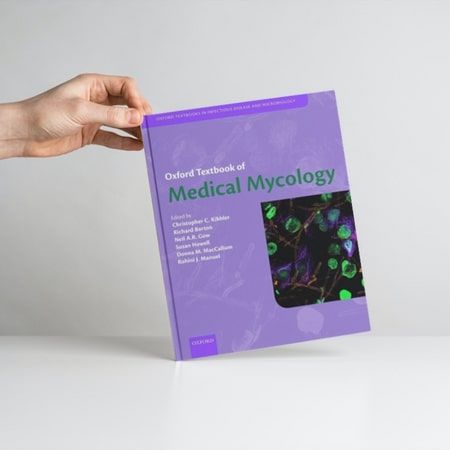
“The Oxford Textbook of Medical Mycology” is a comprehensive reference text that provides global expertise on the science and medicine of human fungal disease. The book is written by a leading group of international authors and is divided into sections that cover the principles of mycology, the organisms, a systems-based approach to management, fungal disease in specific patient groups, diagnosis, and treatment.
The detailed clinical chapters take into account recent international guidelines on the management of fungal disease. The book’s coverage of recent developments in taxonomy, fungal genetics, and other ‘omics,’ epidemiology, pathogenesis, and immunology makes it an essential resource for both scientists and clinicians.
The extensive illustrations, tables, and in-depth coverage of topics, including discussion of the non-infective aspects of allergic and toxin-mediated fungal disease, aid in the understanding of mechanisms and pathology and extend the usual approach to fungal disease.
This textbook is essential reading for microbiologists, research scientists, infectious diseases clinicians, respiratory physicians, and those managing immunocompromised patients. It is also a useful companion text for students and trainees looking to supplement mycology courses and microbiology training.
5. Radical Mycology: A Treatise on Seeing & Working With Fungi
Author: Peter McCoy
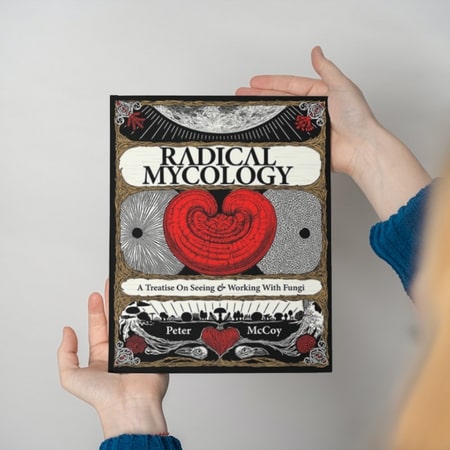
“Radical Mycology” by Peter McCoy is a unique and comprehensive book that explores the world of fungi and their profound influences on the evolution of all life and human cultures.
The book interweaves short essays on the lessons of fungi with chapters that explore the uniqueness of fungal biology, the critical ecological roles of micro and macro fungi, and the importance of lichens as indicators of environmental health. It also equips readers with the skills for accurately identifying mushrooms and mycorrhizal fungi.
With this foundation laid, readers are then introduced to techniques for making potent fungal medicines, growing fermenting fungi for food, and cheaply cultivating mushrooms using recycled tools.
The book also presents detailed information on the principles and practices of “regenerative natural mushroom farming,” a practice largely influenced by the design system of permaculture. Additionally, the book covers cultivating mycorrhizal fungi and the science of mycoremediation, the application of fungi to mitigate pollution in our homes and environment.
Concluding the book are deeper insights into the cultural effects that fungi present, from a philosophical reflection of fungal growth in the design of human societies to an exhaustive examination of the history of psychoactive mushrooms.
6. Larone’s Medically Important Fungi: A Guide to Identification
Authors: Thomas J. Walsh, Randall T. Hayden, Davise H. Larone
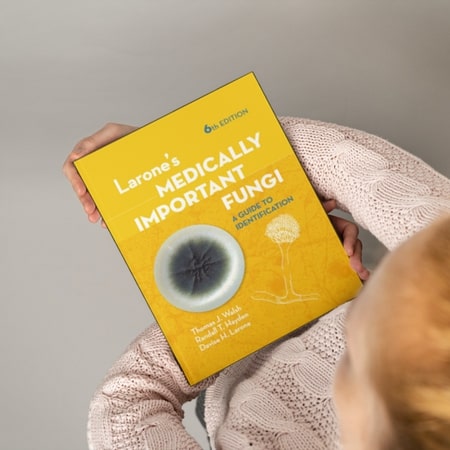
“Medically Important Fungi: A Guide to Identification” by Elizabeth A. Larone is the definitive guide for identifying fungi from clinical specimens. The book expands the knowledge and supports the work of medical professionals by providing detailed descriptions of the major mycoses as viewed in patients’ specimens by direct microscopic examination of stained slides.
It offers a logical step-by-step process for the identification of cultured organisms, utilizing detailed descriptions, images, pointers on organisms’ similarities and distinctions, and selected references for further information.
The book covers nearly 150 of the fungi most commonly encountered in the clinical mycology laboratory, presenting details on each organism’s pathogenicity, growth characteristics, relevant biochemical reactions, and microscopic morphology.
It also includes photomicrographs, Dr. Larone’s unique and elegant drawings, color photos of colony morphology, and various test results. Additionally, the book explains the current changes in fungal taxonomy and nomenclature that are due to information acquired through molecular taxonomic studies of evolutionary fungal relationships.
The extensive section of easy-to-follow lab protocols, a comprehensive list of media and stain procedures, guidance on the collection and preparation of patient specimens, and an illustrated glossary make “Medically Important Fungi: A Guide to Identification” an essential resource for novices and experienced professionals in clinical microbiology laboratories.
7. The Fungi 3rd Edition
Author: Sarah C. Watkinson, Lynne Boddy, Nicholas Money
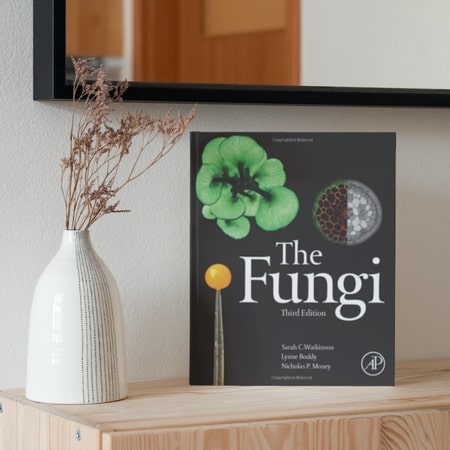
“The Fungi, Third Edition” is a comprehensive and thoroughly integrated treatment of the biology of fungi. This modern synthesis highlights the scientific foundations that continue to inform mycologists today, as well as recent breakthroughs and the formidable challenges in current research.
Written by three leading fungal biologists, the book offers a wide scope with the depth of inquiry and clarity required for a comprehensive understanding of fungal biology. The book describes the astonishing diversity of fungi, their complex life cycles, and intriguing mechanisms of spore release. The distinctive cell biology of fungi is linked to their development as well as their metabolism and physiology.
One of the great advances in mycology in recent decades is the recognition of the vital importance of fungi in the natural environment. “The Fungi, Third Edition” explores the fascinating relationships between fungi and plants, including mycorrhizal symbioses, plant diseases caused by fungi, and the role of fungi as decomposers of dead plant tissues.
The book also covers the supportive and harmful interactions of fungi with animals, including humans, and their significant role in global nutrient cycles. This book is an essential resource for undergraduates and graduate students, as well as professional biologists interested in familiarizing themselves with specific topics in fungal biology.
8. The Kingdom of Fungi
Author: Jens H. Petersen
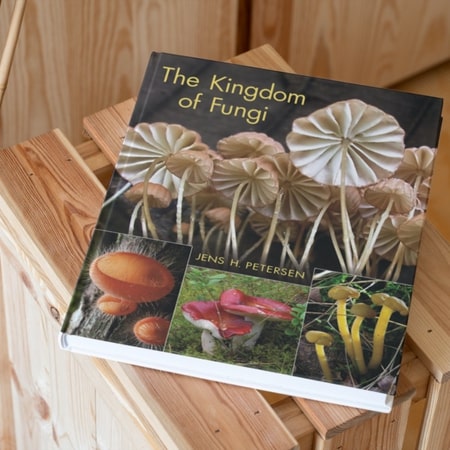
“The Kingdom of Fungi” is a fascinating book that provides an intimate look at the world’s astonishing variety of fungi species. The fungi realm has been called the “hidden kingdom,” and this book brings it to life with more than 800 stunning color photographs and concise text that describes the biology and ecology of fungi, fungal morphology, where fungi grow, and human interactions with and uses of fungi.
From cup fungi and lichens to truffles and tooth fungi, clubs and corals, and jelly fungi and puffballs, this beautifully illustrated book features a wide range of fungi species, highlighting their diverse colors, sizes, and shapes.
“The Kingdom of Fungi” is a must-have reference book for naturalists, researchers, and anyone interested in fungi. This book reveals fungal life as never seen before and provides a wealth of information on fungal biology, morphology, distribution, and uses.
The stunning photographs and concise descriptions make it easy to identify and appreciate different fungi species, while the in-depth coverage of fungal ecology and human interactions with fungi makes it a valuable resource for understanding the role of fungi in the natural world and in human culture.
9. Mushrooms of the Northeast: A Simple Guide to Common Mushrooms
Authors: Teresa Marrone, Walt Sturgeon
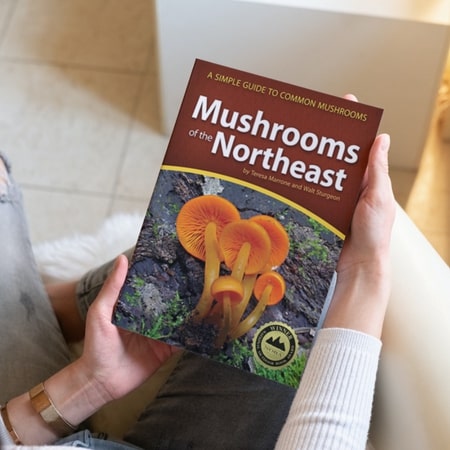
“Mushrooms of the Northeast” is an indispensable field guide for anyone interested in mushrooming in the northeastern region of the United States.
Written by foraging experts Teresa Marrone and Walt Sturgeon, this region-specific book is organized by shape and color, making it easy to identify more than 400 species of common wild mushrooms found in Connecticut, Maine, Massachusetts, New Hampshire, New Jersey, New York, Ohio, Pennsylvania, Rhode Island, and Vermont.
The book is packed with hundreds of full-color photographs and easy-to-understand text that provides details on each species, giving readers the confidence to identify mushrooms in the field.
In addition to the detailed descriptions of each species, “Mushrooms of the Northeast” also features a Top Edibles and Top Toxics section, which helps readers distinguish between edible wild mushrooms and those to avoid.
With this comprehensive guide, even beginners can confidently start identifying the mushrooms they find in the wild. So, get your hands on “Mushrooms of the Northeast” and start exploring the fascinating world of mushrooming in this region of the United States.
10. Mycelium Running: How Mushrooms Can Help Save the World
Author: Paul Stamets
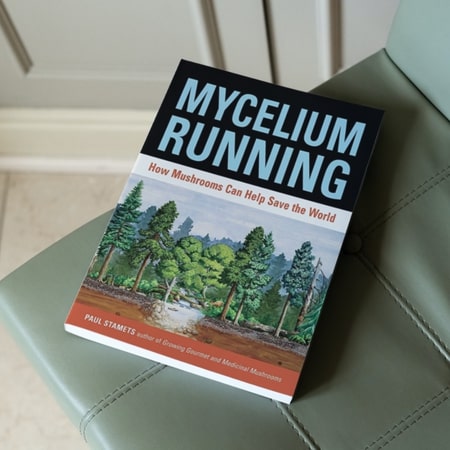
“Mycolution” is a term coined by mushroom expert Paul Stamets, who believes that growing more mushrooms could be the key to saving the environment. In his groundbreaking book, “Mycelium Running,” Stamets explains how microscopic cells called “mycelium,” the fruit of which are mushrooms, can recycle carbon, nitrogen, and other essential elements by breaking down plant and animal debris to create rich new soil.
By harnessing mycelium’s digestive power, Stamets believes we can use mycoremediation to decompose toxic waste and pollutants, mycofiltration to catch and reduce silt and pathogens from agricultural watersheds, mycopesticides to control insect populations, and mycoforestry and myco-gardening to enhance the health of our forests and gardens.
In this comprehensive guide, Stamets provides detailed chapters on each of these four exciting branches of “mycorestoration,” as well as chapters on the medicinal and nutritional properties of mushrooms, inoculation methods, log and stump culture, and species selection for various environmental purposes.
This heavily referenced and beautifully illustrated book is destined to be a classic reference for generations to come who seek to explore the powerful role of mycelium in healing our planet. Get your hands on “Mycelium Running” and join the movement towards a more sustainable future.
Things to Consider Before Purchasing Mycology Textbooks

Mycology is a fascinating and complex field of study that requires a thorough understanding of fungal biology, taxonomy, and ecology. To master the subject, one needs a reliable textbook that covers all the essential aspects of mycology.
With so many options available on the market, it can be challenging to choose the right one. Here are some things to consider before buying the best mycology textbook.
Author’s Expertise and Reputation
Before buying a mycology textbook, it’s essential to check the author’s expertise and reputation in the field. Look for textbooks written by authors who have years of experience in teaching, researching, and publishing on mycology.
You can check their credentials, such as academic degrees, publications, and research grants, to get an idea of their level of expertise. Reputable authors often have a large following of students, researchers, and professionals in the field.
Content and Organization
The content and organization of the textbook should be easy to understand and follow. A good mycology textbook should cover all the essential aspects of the subject, such as fungal biology, ecology, taxonomy, and medical mycology.
It should also have clear explanations, illustrations, and diagrams that help readers grasp complex concepts. The textbook should be organized in a logical and systematic manner, with each chapter building on the previous one.
Latest Edition and Updates
Mycology is a constantly evolving field, and new discoveries are made regularly. Therefore, it’s essential to choose a textbook that is up-to-date and includes the latest developments in mycology. Look for a textbook that has been recently updated to reflect the latest advances in the field, such as new taxonomical frameworks or molecular genetics techniques.
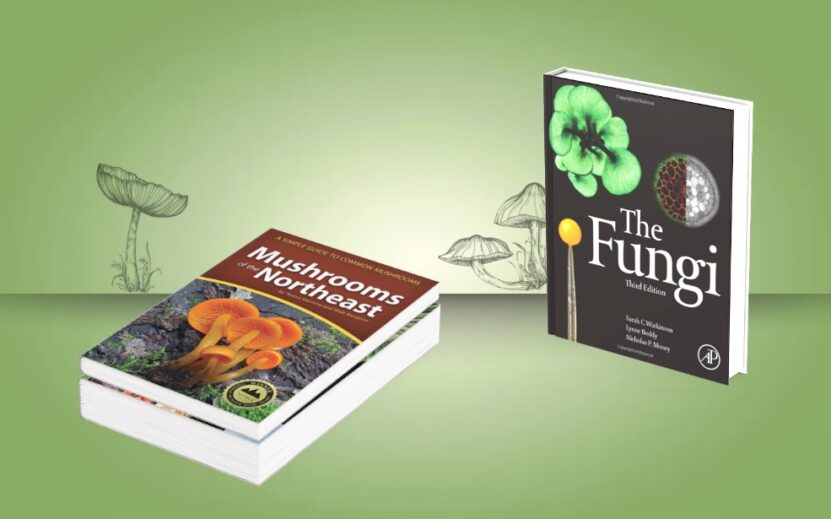
Level of Difficulty
Consider the level of difficulty of the textbook before purchasing it. Some mycology textbooks are written for beginners, while others are designed for advanced students or professionals.
It’s crucial to choose a textbook that matches your level of understanding and expertise. If you’re new to mycology, choose a textbook that has a clear and concise writing style and covers the basics of the subject. If you’re an experienced mycologist, look for a textbook that delves deeper into specific areas of mycology.
Price
The price of the textbook is an important factor to consider. Some mycology textbooks can be expensive, but it’s important to remember that the cost should reflect the quality and value of the book. However, there are also affordable options available that still provide comprehensive and reliable information on mycology. Consider your budget and choose a textbook that offers the best value for your money.
Reviews and Recommendations
Finally, consider reading reviews and recommendations from other mycology students, researchers, and professionals before purchasing a textbook. Reviews can provide valuable insights into the content, organization, and quality of the textbook. You can also ask your professors, colleagues, or mentors for recommendations on the best mycology textbook to suit your needs.
Closing Thoughts
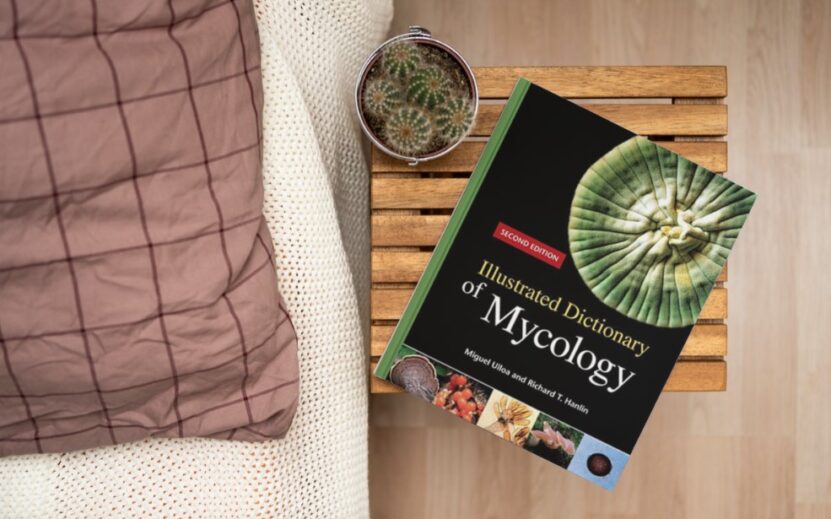
There are many excellent mycology textbooks available that cover a broad range of topics, from the basic science of fungi to their practical applications in medicine, agriculture, and the environment.
When considering which textbook to purchase, it is important to assess your needs and interests, as well as the level of detail and scientific rigor you require. Look for textbooks that are up-to-date, well-organized, and written by respected experts in the field.
Consider the clarity and accessibility of the writing style, as well as the quality and quantity of illustrations, photographs, and other visual aids. Additionally, think about the format and price of the textbook, as well as any accompanying online resources or supplementary materials.
Whether you are a student, researcher, or enthusiast, the right mycology textbook can help deepen your understanding and appreciation of these fascinating and important organisms.
If you are a book lover, you will surely be interested in our recent article about the best large print book clubs, which provides detailed reviews and in-depth info.
